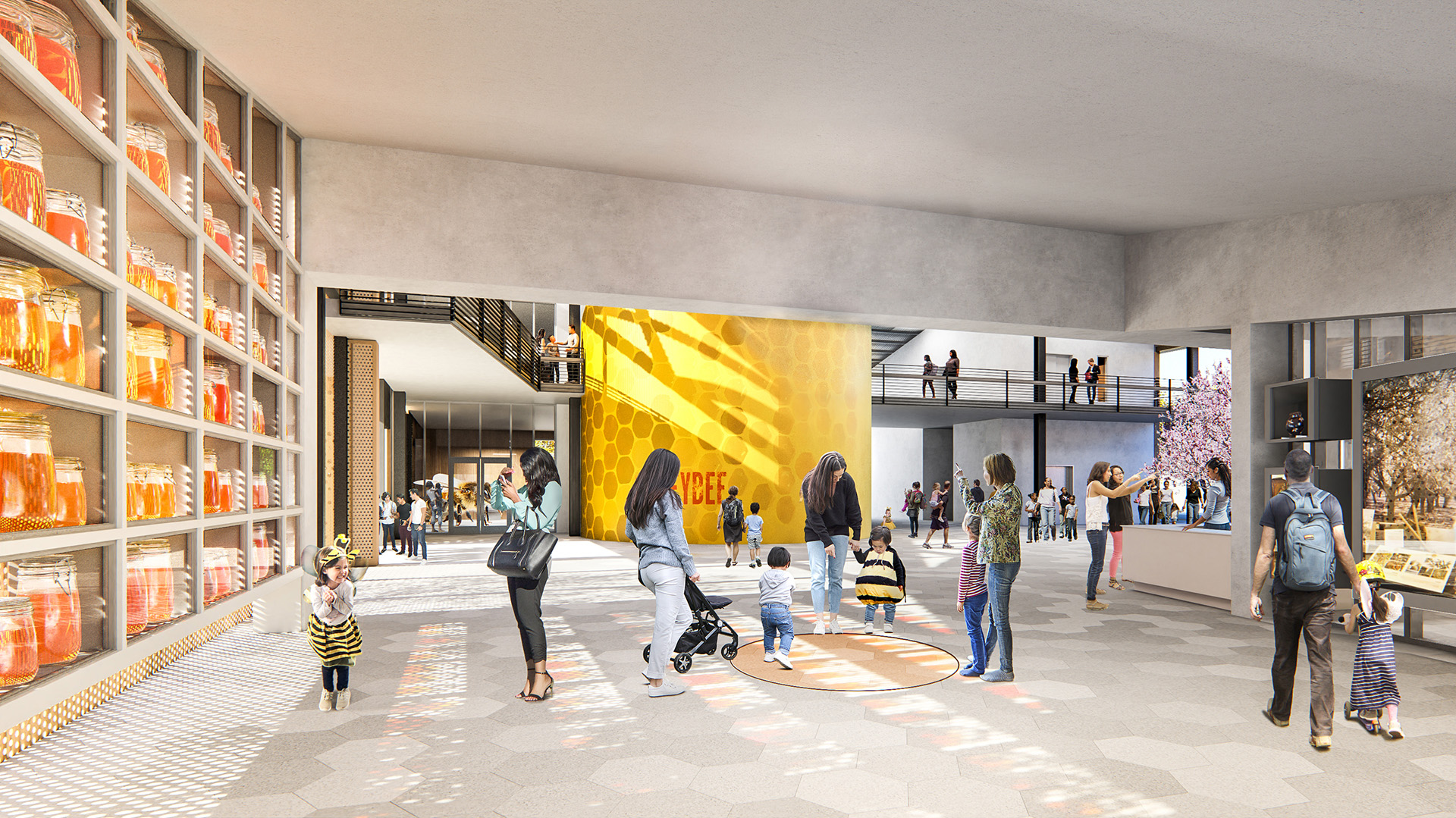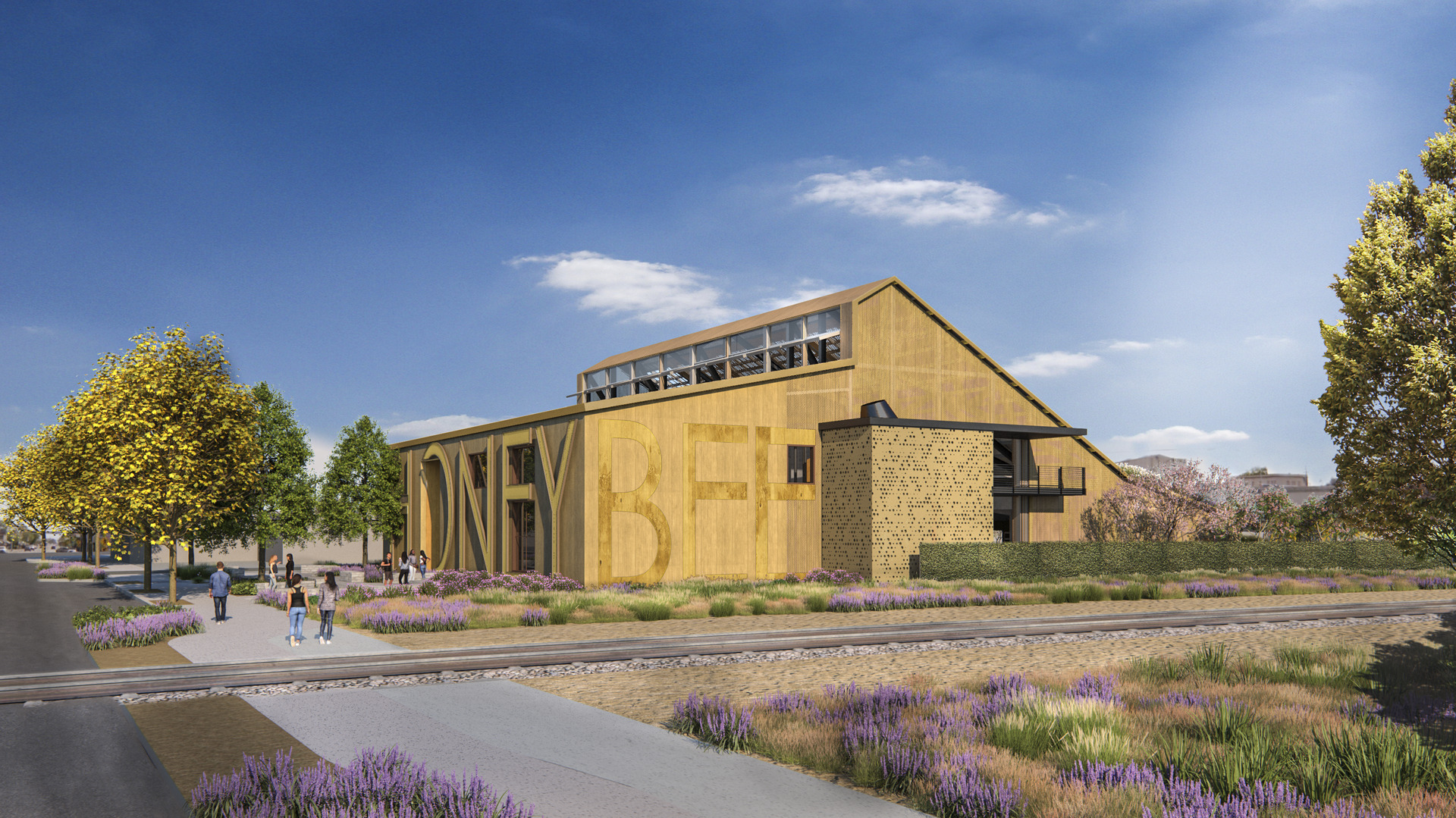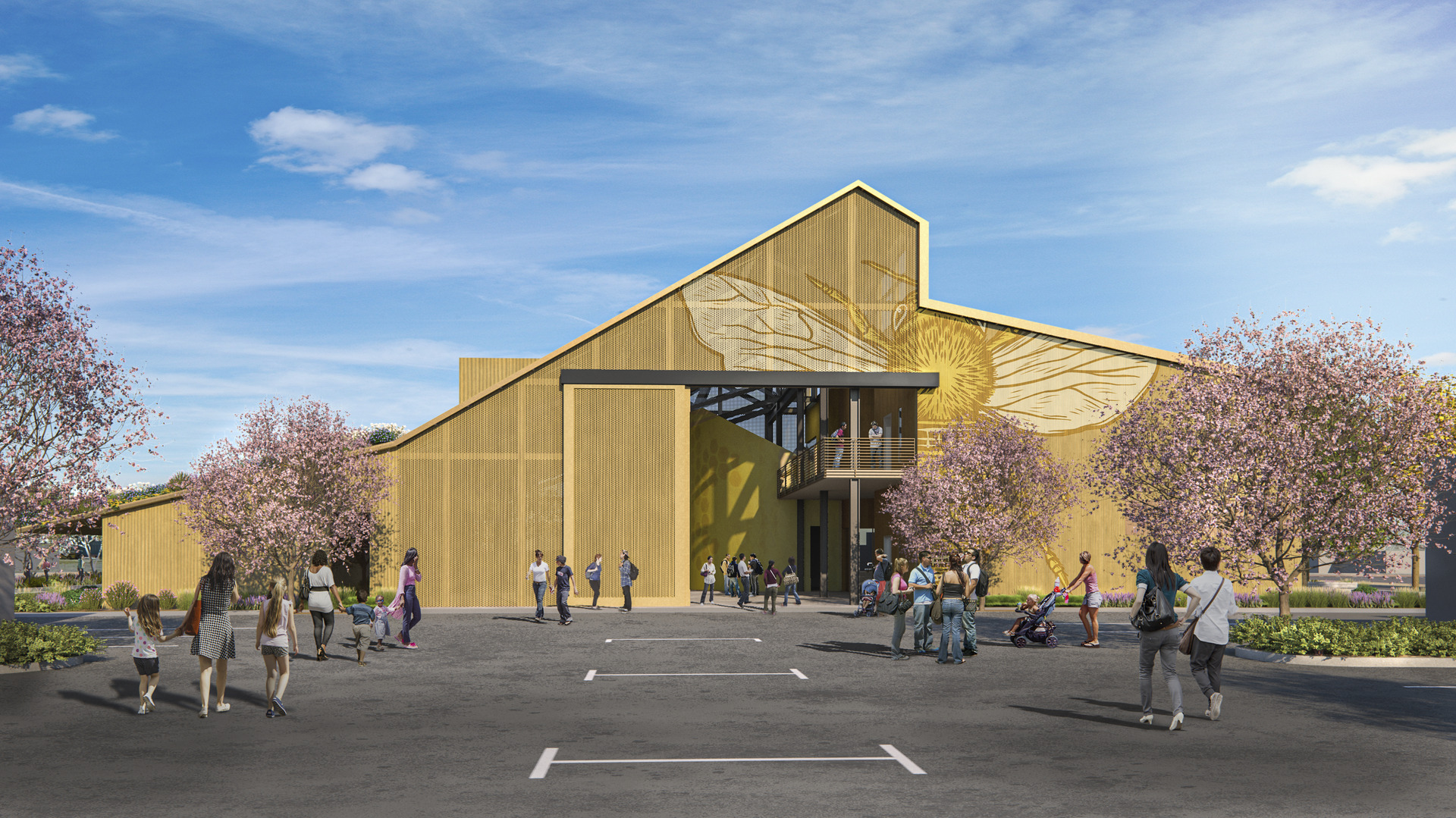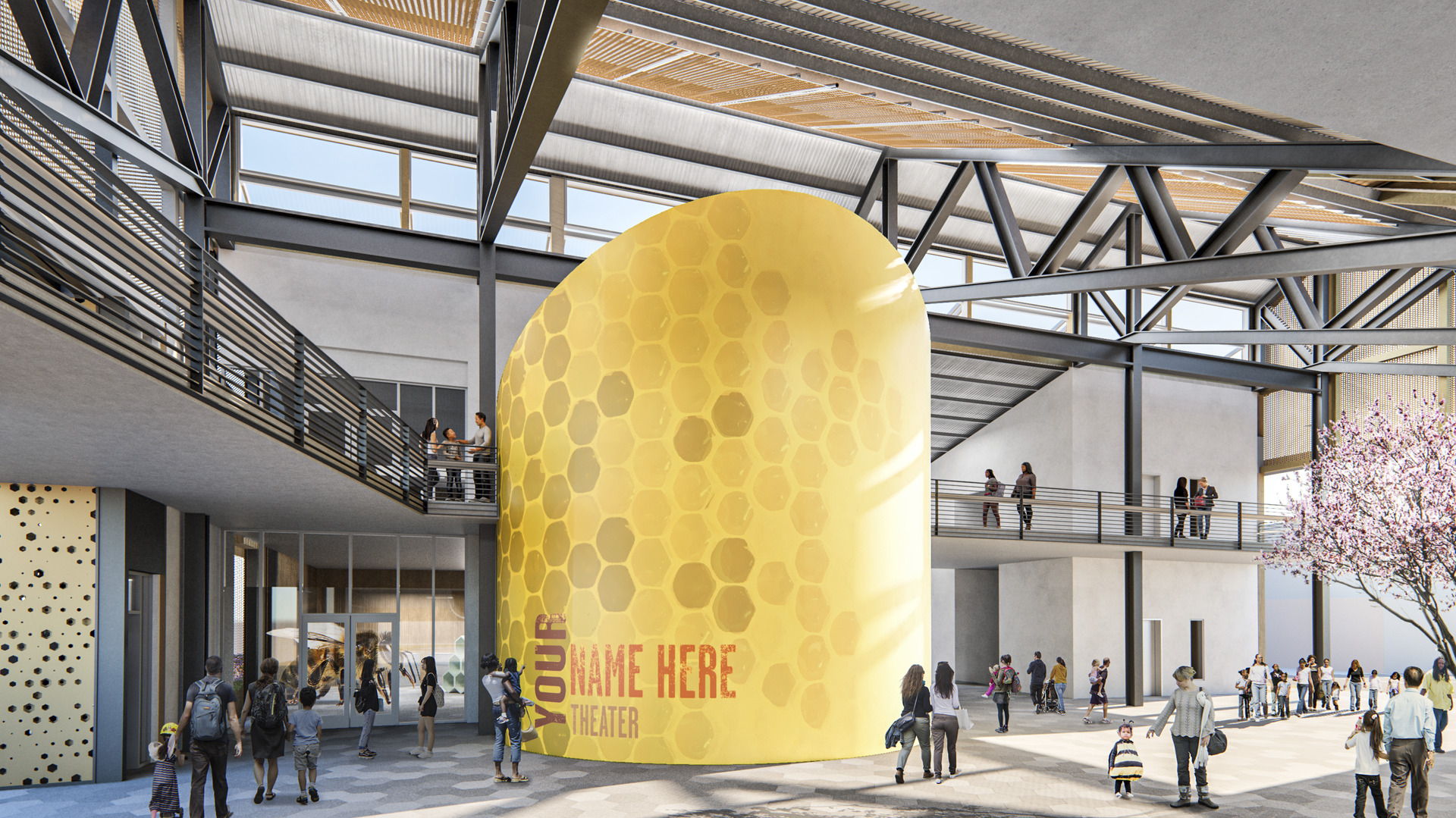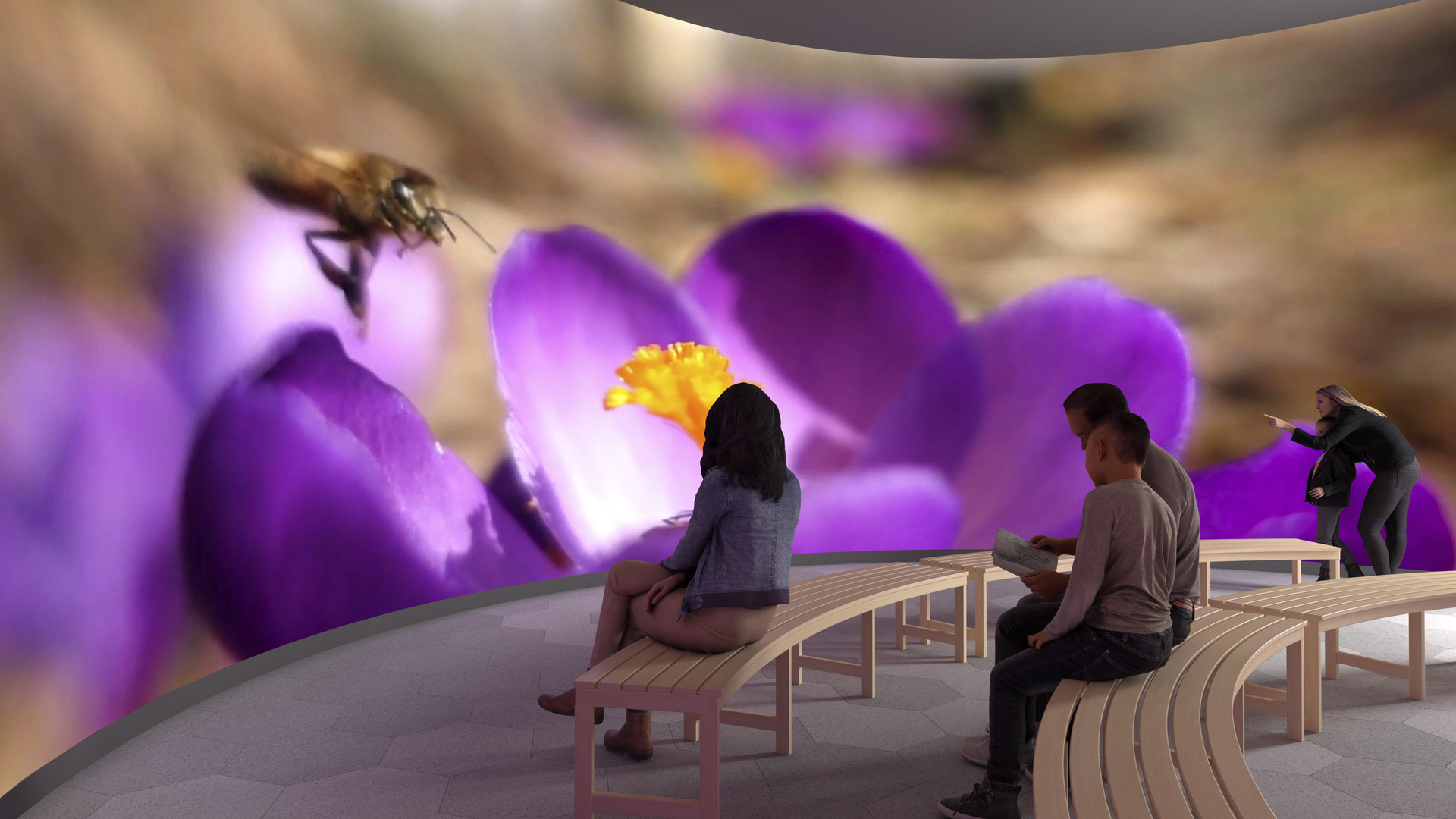Dedicated exhibits will range from traditional displays, artifacts, and interactive play areas to immersive multimedia and high-tech augmented reality interfaces. A cylindrical theater can hold an entire class of school children and immerse them in a 360-degree, larger-than-life cinematic introduction to the world of honeybees. A large observation hive invites visitors to watch bees in action and an interactive exhibit gallery guides them through the pollination cycle. A multifunctional classroom houses lectures, hands-on labs, culinary classes, honey-tasting events, and more. The Main Hall stages informal gatherings, community events, temporary exhibits, and private functions. The outdoor landscape is full of a variety of gardens and plazas. A butterfly garden with pollinating plants is visible from inside the gallery. Above the main entrance, a rooftop pollinator garden is rich with abundant and colorful flowering plants that attract bees so we can see them at work—from a safe distance. The south arrival plaza doubles as an event space and spills into a shaded park for smaller gatherings and quiet contemplation.
Inspired by the ingenuity of both bees and the “prairie cathedrals” of regional farm buildings, the structure is designed not only to house the center but also to embody its principles. The rooftop garden combined with a large solar array creates a doubly photosynthetic roof, harnessing the power of the sun while shading the interior for comfort. The main hall is heated and cooled without any traditional mechanical systems. Emulating the ventilation of honeybee hives, it passively uses physics to move air through the space and keep people comfortable year-round. The result is a cost-effective and extremely high-performance facility that will achieve net-zero-energy, LEED Platinum certification, and Living Building Challenge certification. It will also become one of the world’s smartest buildings and the nation’s only center of its kind.

